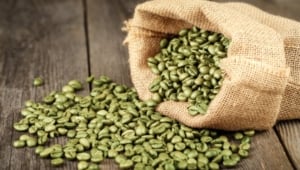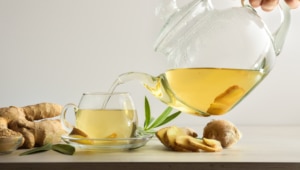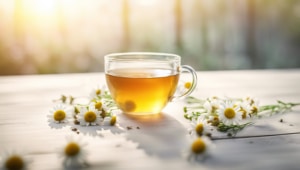9 Types of Coffee + All 4 Different Coffee Beans

Coffee: to some, just the smell brings a smile to their face, giving a jolt of energy to their tired beings. Many can’t quite function without first having a cup of hot java in the morning. Find here the different types of coffee and learn everything about coffee beans.
Where did the use of coffee start? Coffee actually originated somewhere in Ethiopia, before crossing the red sea in the 15th century. When the 16th century arrived, coffee was known and loved across most of the Middle East.
Back then, coffee seeds were roasted and brewed into strong, black concoctions. These were drunk to keep people awake for their long nights of prayer, rather than just enjoyment. Soon, coffee became a well-loved beverage, however, rather than just a sort of pseudo-medicine.
Types of Coffee Beans

Types of Coffee Beans
There are four primary types of coffee beans, which all taste different. They’re each best suited for specific kinds of coffee, and have been grown and developed over the years to become what they are today. But what makes them so different? Let’s take a look.
Learn here everything about the benefits of black coffee.
Arabica

Arabica
Arabic coffee beans are the most widely produced and favored ones you can buy. Arabica beans need very specific conditions, including high altitude, lots of shade, and a good amount of rain.
Besides this, Arabica coffee plants are amongst the easiest to grow, which is probably why over 60 percent of the world’s coffee is made using these.
Arabica coffees are known for being more acidic, and taste better served hot rather than iced or with cream.
Robusta

Robusta
Robusta beans are essentially what it says on the tin: they’re hardy coffee beans, which are both disease resistant and less fussy about their climate.
Robusta beans also contain more caffeine than Arabica ones, making them a great choice for espressos and iced coffees.
Best of all, Robusta tends to offer chocolatey flavor notes and low acidity, making them a delicious choice for sugared coffee fans.
Excelsa

Excelsa
Excelsa coffee beans have recently been re-named, and are now classified as a sub-type of the Liberica beans. Nevertheless, they offer a distinct flavor experience.
Excelsa coffee tends to be fruity as well as a little tart, while also offering darker notes. This type of coffee bean is mostly grown in the SouthEast of Asia. It’s a rare coffee type, and not readily available.
Liberica
Liberica coffee beans tend to have a more floral, fruity flavor with a hint of smokiness. They’re not readily available, but worth trying if you can get your hands on them.
Interestingly, these coffee beans are the only known ones which are irregularly shaped. They’re also larger than other kinds of coffee beans.
Washed Versus Natural

Washed Versus Natural
The ‘washed vs natural’ question isn’t actually one of a different type or types of coffee beans. Rather, it’s how the coffee beans were treated before being roasted.
Natural coffee beans are, as the name implies, left as they are. This allows them more exposure time with the coffee cherry’s natural sugars. Natural coffee beans tend to have more fermented, fruity types of flavors.
Washed coffee beans tend to be slightly more popular. They offer very clear coffee notes, minus any fermented, overly tart flavors. Washed coffees can taste fruity, though they won’t usually have berry flavor notes.
Roasting Types and Its Impact on Flavor

Roasting Types and Its Impact on Flavor
Roasting coffee is an intricate process that really develops the flavors we know and love. There’s much more to it than just roasting a few beans until a timer goes off.
Coffee roasting is somewhat of an art form, developing deep, complex flavors in your favorite blends. The high temperatures used in this process cause the beans to release oils, which is where varieties of flavors come from.
Light Roast
Lightly roasted coffee beans tend to be heated until their internal temperature reaches around 355-400 F. At this point the beans are taken away from the heat source.
Lightly roasted coffee beans tend to taste fairly acidic. They aren’t exposed to high enough heat to develop oils at their surface, so there isn’t much complexity either.
Medium Roast

Medium Roast
Medium roasted coffee beans are generally toasted to a temperature of around 410 to 425 F.
These types of coffee tend to be fairly balanced in flavor and have less acidity than their lightly roasted counterparts. Medium roasts aren’t particularly complex in flavor
Medium-Dark Roast

Medium-Dark Roast
Medium-dark roast coffees are the result of beans heated to an internal temperature of around 435-445 F.
These coffee beans tend to have a lot of surface oils after the roasting process, resulting in lots of complex flavors. Medium-dark roasts tend to have a combination of sweet yet bitter flavors.
Dark Roast

Dark Roast
Dark roast coffee beans are toasted to temperatures around 465 to 480 F. Coffee made from dark roast beans tend to have a mixture of sweet, bitter, and smoky flavors.
They’re not acidic and have less caffeine than their paler counterparts. Generally, the darker the roast the sweeter the coffee. With that said, only high quality coffee beans tend to achieve maximum sweetness.
Popular Coffee Drinks and Types around the World

Popular Coffee Drinks and Types around the World
Modern coffee is enjoyed in most parts of the world today. In fact, there are at least 30 different coffees regularly made and ordered. Here are some of the most popular ones we know.
Are you looking for alternatives to coffee? Here you’ll find them.
Espresso
The espresso is both a coffee and a way to brew said caffeinated beverage. A pressurized coffee brewing process is used in the making of espresso, which results in a creamy, highly concentrated small coffee.
Americano
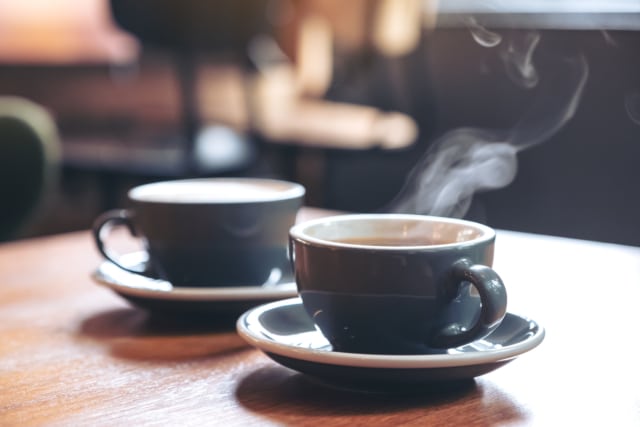
Americano
An Americano is simply an espresso topped up with hot water. Depending on where you buy it — or how you choose to make it at home — Americanos are usually either ⅓ of espresso with ⅔ of water or half and half.
Cappuccino

Cappuccino
There are three main types of milky coffee, namely the cappuccino, latte, and flat white. Cappuccinos are made using a ratio of ⅓ of espresso to ⅓ of steamed milk and ⅓ of frothed milk.
Cappuccinos are the original Italian milk coffee, whereas lattes and flat whites originated elsewhere.
Do you want to learn more about green coffee? Then follow this link.
Latte
Lattes are made using a double shot of espresso, or ⅓ of the beverage, ⅔ of steamed milk, and a little topping of milky foam. Lattes were first made in America, though they’re popular all over the world today.
Flat White

Flat White
Flat white coffees originated in Australia or New Zealand. They’re made with a double shot of espresso and ⅔ of steamed milk frothed generously into a cappuccino-style cup.
They’re probably the middle ground between a cappuccino and a latte, in having less milk than the latte but more coffee than a cappuccino.
Mocha
Mocha originally referred to coffee made from a specific kind of bean that was only grown in the port city of Mocha in Yemen. Modern mochas usually refer to a mix of coffee and hot chocolate, instead.
A more traditional version is also available in some places, consisting of an espresso, cold cream, and melted or shaved chocolate on top.
Filter Coffee

Filter Coffee
Filter coffees are made by placing ground coffee in a specially-made filter, and then pouring hot water over them.
The water is pulled through the grounds by gravity, resulting in a mellow coffee not unlike an Americano. A lot of water and time are required in this process to produce a rich, flavorful coffee.
Instant Coffee
Instant coffee is generally shunned by coffee aficionados, though some can be very good. It is commercially produced by drying brewed coffee, creating a powder or coffee granules.
The advantages are speedy preparation and an extended shelf life. Instant coffee is also quite useful when it comes to baking and cooking (including for marinating savory foods.)
Cold Brew
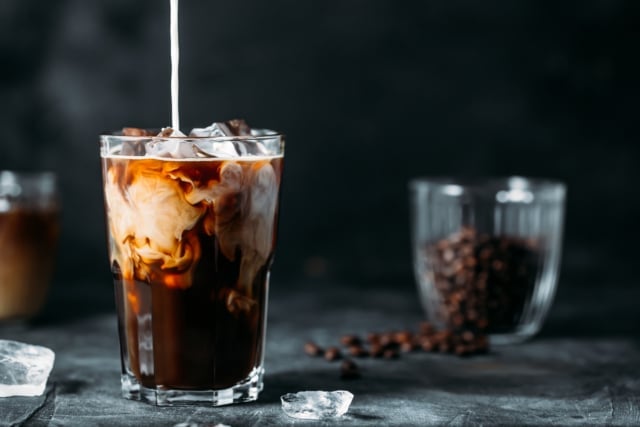
Cold Brew
Cold brew is actually a very old Japanese invention, which is also known as Kyoto-style coffee. To make it, coffee grounds are steeped in cold water over longer periods of time.
Because the coffee isn’t exposed to high temperatures at all, it tends to taste a lot smoother and sweeter. Cold brew is great used in iced drinks, where you’d normally cool down regular coffee first.
The Different Types of Espresso-Coffees

The Different Types of Espresso-Coffees
If you think the above types of coffee aren’t complicated enough, congratulations: there are sub-varieties available for most coffee types.
This isn’t to make things more difficult, it’s just that coffee changes subtly in flavor depending on how exactly you prepare it. None are more varied than the espresso, which we’ll explain in detail below.
Espresso Variations
Espresso can be served as a regular shot, as a double, or as a ‘short’ macchiato. The latter is served with a little bit of steamed milk and frothy foam. You can also get long macchiatos, which are essentially double shots of espresso with a tiny bit of steamed milk.
Lungo

Lungo
The lungo is an espresso with more water. It’s made using the additional water and has a longer processing time than a regular espresso.
This also differs from an Americano, in that the Americano just has extra water added after the coffee is brewed, whereas a lungo is brewed with more water to begin with.
Ristretto
A ristretto is an espresso made with half of the usual amount of water — it’s the opposite of a lungo. It’s a syrupy, very strong and dark espresso, which is best served when you just really need that extra jolt of energy.
Macchiato
Macchiatos are espresso coffees topped with steamed milk or foam. Adding the milk is somewhat comparable to adding a small amount of water to whisky. It’s added to allow the taste of the espresso to shine.
Unique Coffee Specialities from around the World

Unique Coffee Specialities from around the World
If you’re a true coffee connoisseur, you may wish to try more unique varieties from around the world. In this case, you’re in luck, as there are some interesting coffee brews available from just about anywhere. Below are our favorites.
Turkish Coffee
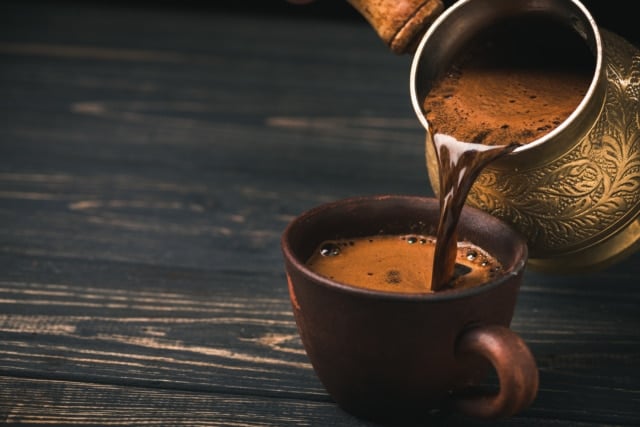
Turkish Coffee
Turkish coffee is made using coffee beans that have been ground to an exceptionally fine consistency. These are added to boiling water using traditional copper pots.
Turkish coffees are not filtered, and are therefore thicker and often stronger than regular coffee types. Interestingly, Turkish coffee actually originated in Yemen.
Vietnamese Cà phê đá

Vietnamese Cà phê đá
This Vietnamese-style iced coffee is made using coarsely ground Robusta coffee beans. It’s made using a small drip filter known as a cà phê.
The slow process results in an intensely flavorful coffee, which is then poured over ice. You can also get cà phê sữa đá, which is the same coffee but with additional sweetened condensed milk.
Spanish Cortado
Spanish cortado coffees are made using a shot of espresso, which is ‘cut’ with a little bit of warmed milk. It’s roughly half and half espresso and milk, so it’s a little like a mix between an Americano and a latte.
Italian Affogato

Italian Affogato
Affogatos are the true coffee lover’s dessert treat. Affogatos are made using vanilla ice cream and espresso.
Translated from Italian, affogato quite literally means ‘drowned’, as the ice cream is simply drowned in espresso. You can eat or drink an affogato, but more than likely you’ll end up doing both.
Irish Coffee
Irish coffee is a mix of Irish whiskey, hot coffee, and sugar. It’s a delicious cocktail, with a reasonable amount of alcohol as well as a good kick of caffeine. The more modern Baileys coffee is actually just a version of this, which uses Irish Cream in coffee instead of sugar and cream.
Brazilian Cafezinho

Brazilian Cafezinho
Cafezinho is the most commonly enjoyed coffee drink in Brazil. Cafezinhos are served in small cups, made up of boiling hot filtered coffee with copious amounts of sugar.
Cafezinhos are said to be almost synonymous with a welcome in Brazil, where they are frequently offered the minute someone enters a house or office.
Tiramisu

Tiramisu
The tiramisu isn’t exactly a coffee-based beverage, but then neither is the affogato. Tiramisu is an Italian dessert flavored with coffee.
It’s made using savoiardi (ladyfinger) biscuits, a whipped egg-based topping with mascarpone, and cocoa powder. No coffee-loving article would be complete without the mention of tiramisu.
- McFlurry Flavors. Best Flavors & Alternatives.
- Oreo Cookie Flavors. Best and Weirdest Flavors.
- Starbucks Refresher. Tips and Best Drinks.
- Jelly Belly Flavors. Best and Grossest.
- Boba Flavors. Best Flavors and Types.
- Pop Tart Flavors. Tasty Alternatives and Best Flavors.

